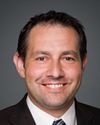Mr. Chair and members of the committee, my name is Allan Cole. I am a funeral director, a mortuary affairs specialist, a logistics specialist, and even an event planner of sorts.
I am a proud member of the Funeral Service Association of Canada; however, the work I do, to some degree, is significantly different inasmuch as I have occasion in many circumstances to work directly on behalf of the government.
I followed my family's heritage and in my grandfather's footsteps and became a funeral director 34 years ago. I was raised in this profession and have been mentored by some of the most respected individuals in funeral service across Canada.
It is indeed an honour to have been asked to appear before this esteemed committee. During my career, I have served and participated in some of the most solemn events and occasions witnessed in Canada. I have been honoured to be a part of funerals for municipal and provincial police officers, our national police service, serving military personnel and veterans of all branches of service and all ranks, politicians, and high-ranking government officials.
Throughout my career I have facilitated observances of rituals, customs, traditions, and protocols. Some of these practices and considerations are of religious or cultural significance and dictate observances brought down through the ages to commemorate a life lived or to celebrate a person's lifelong accomplishments.
Death has always been commemorated with ritual and ceremony. Every culture has evolved with its own traditions around the matter, from the mummification of the ancient Egyptians to the massive pyre afforded a Viking chieftain.
Many burial customs were devised superstitiously to guard against the evil spirits thought to have caused the person's death. Chants, bell ringing, candles, and even gunfire have all been used to ward off these phantoms. Such practices have varied extensively with time, place, and religious beliefs, but many persist today as signs of respect toward not only the deceased but the grieving family that has lost a loved one.
To my knowledge, there are several directives or guides for the observance of appropriate protocol but no one single source from which we could derive the Canadian way of commemorating the loss of a uniformed person or dignitary, or celebrating their lifelong accomplishments.
Many Canadians have made tremendous contributions or have paid the ultimate price, and the way we commemorate their lives and service is in the national interests of all. That commemoration should be steeped in tradition and adhere to a national protocol that reflects our national heritage and is clearly identifiable as Canadian.
The Canadian Forces has its Canadian Forces Manual of Drill and Ceremonial. The Royal Canadian Legion has a guide for funerals, which includes the Legion tribute and process for such a tribute. It includes music and identifies participants, order of services, and more. The RCMP has its own guide for the regimental funeral, perhaps the current incarnation of the work done by retired corps Sergeant Major Eric Young, as Brian alluded to.
Public Works and Government Services Canada has a ceremonial guide that refers to state funerals·and protocols concerning such things as flags and guards.
At the provincial level there is a variety of guides and documents produced to direct what protocols should be observed. As I said, there's a variety of them, but no one single voice.
My firm has been honoured to serve as the mortuary affairs component for the Canadian Forces and the RCMP for many years. We facilitate the repatriations for fallen serving members from all over the world. I have conducted military funerals and burials in Canada and at the Commonwealth war graves cemeteries in France, Holland, Poland, and Belgium.
All of the repatriations since the beginning of the Afghanistan deployment were orchestrated as a joint effort between my firm and members of the Canadian Forces in Trenton, Ottawa, and Toronto. The tragic losses in Afghanistan represented many of the circumstances in which very public arrival ceremonies in Trenton resulted in some unique applications of military protocol and ceremonial considerations.
Of course, there was no precedent to refer to concerning the repatriation ceremony. Almost all of it was developed over time and became well organized and repetitive with the frequency of the requirement. Early repats began with the padre leading the casket from the aircraft to the hearse, with no families present. Then it was decided that padres should be present but not move with the remains, and families should be invited to the arrivals of their loved ones back in Canada.
Early on, there were many heated discussions to facilitate the repat ceremonies because there was no set protocol, no financial considerations to address the needs of travelling families, and no recognized authority to sort out the problems and solutions.
The Canadian Forces Manual of Drill and Ceremonial does not and did not provide for the playing of the bagpipes for most, or the use of a bugler instead for those fallen from the Van Doos regiment. Section 4 of the CF Manual of Drill and Ceremonial, entitled “The Unloading of a Casket from an Overseas Aircraft”, clearly states at point 3, “No band shall be in attendance”. But clearly, the introduction of a piper or bugler added to the respectful and dignified ceremony that quickly became part of a Canadian tradition known as the repatriation ceremony.
Further, the guide does not provide any direction for ceremonial considerations for attending family members.
Further, there was no basis in protocol for the establishment of the Highway of Heroes. However, this singular, uniquely Canadian practice put our method of honouring our fallen on the international stage. This tradition, as it was practised so many times, provided an outlet or a vehicle for ordinary Canadians to salute the men and women of the Canadian Forces and their families for the tremendous sacrifice they made on behalf of all of us.
I believe this singular event, while it was tremendously comforting to the families of the fallen, spawned a feeling of national pride and patriotism the likes of which we have not seen since World War II. The support for our Canadian Forces and our men and women in uniform reached an unprecedented level.
I personally believe fully in the merits, purpose, and benefits of having a nationally recognized protocol for funerals. With every one of these remarkable events, we recognize remarkable Canadians, and by doing so we make a contribution to the history of this great nation. Having a nationally recognized protocol is essential on a go-forward basis for the ongoing establishment and maintenance of our ceremonial traditions and processes.
However, having been involved for over a decade in the implementation of these various initiatives to memorialize, on a national stage, remarkable Canadians, I've become aware of some of the difficulties with interpreting protocol on a one-size-fits-all basis. The concern is that not everybody fits the circumstances that are drawn out in specific protocols.
I believe we need clear direction, with examples of how the protocol is to be implemented and with examples of variations that can be substituted as warranted. This direction should be from a singular national voice that serves as a keeper of the records for traditions, practices, and protocols.
I was asked to oversee the burial at Beechwood for our fallen from Afghanistan. Extensive direction concerning this sort of service is available from the Canadian Forces; however, this guide was written for a time when the funeral process was very different. Today in Canada, approximately 60% of our population opts for cremation rather than earth burial. The number of non-denominational, non-Christian, and non-religious funerals is growing proportionately with our population growth.
At Beechwood Cemetery here in Ottawa, they began to use an ark to carry the urn of a deceased person and to use four pallbearers to convey the urn from the hearse to the grave. This became an accepted practice at our National Military Cemetery. However, if this piece of equipment is not widely accepted or available in other cemeteries in Canada, this protocol then becomes impractical and in many cases impossible. Even the current flag-folding protocol, as it appears on various sites, I don't believe has ever been blessed as the Canadian way of folding our Canadian flag.
I'll share a brief story to demonstrate the importance of this. The flag protocol—the one that is widely used but not yet approved—as it's demonstrated on various federal websites is not easily accomplished with the flag that is provided by the Canadian Forces. The flag identified with the NATO stock number was a nylon flag and subsequently very slippery for pallbearers to grasp and fold crisply. We designed—our company designed—and produced a heavier canvas bunting-type flag that was far more conducive to this. It is now used widely throughout Canada and has become an industry standard as a casket flag. This is just an example to show only that the protocol or standard didn't meet the need satisfactorily and was not suited for the application.
For this reason, I would respectfully suggest that any future guidelines that are written or implemented should be a result of significant and extensive consultation and participation with stakeholders and experts such as funeral directors, clergypersons from all faiths, and those who have participated recently in ceremonies. Further, dissemination of the information should be online on the DHH website for all to see as needed. In addition, the historical significance, the origin, and the basis for the practice or tradition should be recorded so we don't lose sight of the reasons for why we do the things we do.
I thank you all for your time.









